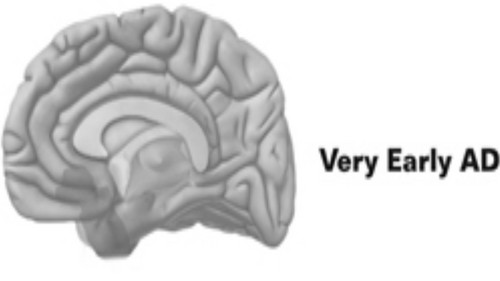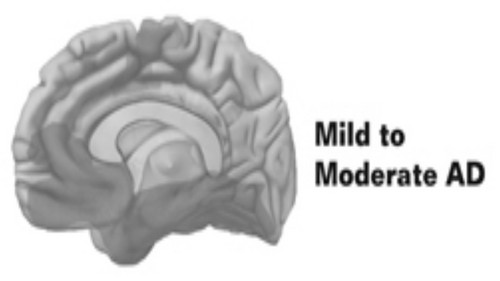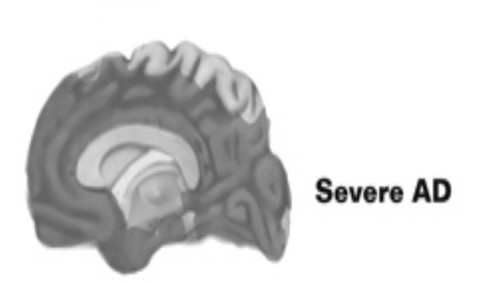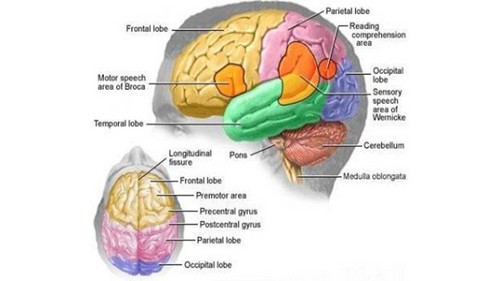Brain Science Documents
Foreword

<> Neuroplasticity refers to your brain's potential to reorganize itself to meet your needs ... by creating pathways allowing it to adapt ...in effect, rewiring your brain. How does this work? When you learn a new skill or engage in activities that cause you to focus and concentrate, your brain creates new connections to sharpen your new skill. The more you focus and practice, the better you get at the new skill you're learning, or, tackling an obstacle you're trying to overcome. By doing this, new neural connections are created in your brain as synapses that, while usually not firing together ...now start to connect to one another in order to support your activity. You are rewiring your brain function in the manner you most need, at that time.

Facts & Statistics on Alzheimer's Disease
History of AD <> Twenty-five years ago, 500,000 people had Alzheimer's Disease; today, 5,000,000 have AD. Twenty-four million people worldwide have dementia. National Alzheimer's Association estimates 18,000 nursing homes care for each 3.2 million clients with dementia. National Alzheimer's Association predicts 8.7 million individuals will have AD by 2030. U.S. Census Bureau estimates 15 million individuals will have AD by 2015. As people live longer, more are being afflicted, straining our ability to provide adequate care.
AD is the fourth leading cause of death in adults in the U.S. after heart disease, cancer, and stroke <> Alzheimer's Disease is a neurodegenerative disease that, in its most common form, is found in people over the age of 65. It is a degenerative disease that attacks the brain and results in impaired memory, thinking, language and behavior. It is a specific organic condition that develops in only some human brains. It is not senility. It is not part of the normal aging process. AD is a progressive neuro-degenerative disorder that affects memory, judgment and social function. AD is the most common form of dementia, responsible for 70% of the cases. AD is the fourth leading cause of death in adults in the U.S. after heart disease, cancer, and stroke. AD is the third most expensive disease to treat after heart disease and cancer.
In later stages of AD, the brain shrinks ...the individual becomes more withdrawn. Personality changes include sudden anger and fear. Confusion increases; speaking turns to silence. Clients become more dependent on nursing staff. Swallowing and breathing shut down.
COGNITIVE ARTS
Evidentiary Cognitive Arts Aging Thru Art programs may maintain and enhance senior cognitive functioning while slowing the advance from mild cognitive impairment (MCI) to Alzheimer's Disease (AD)
Abstract <> 'Multi-modal' programs that address behavior, affect, sensation, imagery intrapersonal and interpersonal relationships, were developed by Arnold Lazarus, (a psychologist) in the 1950's ...and have been proven as the most effective therapeutic approach for Alzheimer's Disease clients.
Two methodologies, similar to one another ...though independently developed by artists with advanced degrees in art, special needs education, art therapy and recreational therapy (one a Fulbright scholar) ... adapted the Lazarus multi-modal approach to incorporate Art, Creative Arts, and Performing Arts in an evidentiary program to maintain, enhance and improve senior cognitive functioning - an approach we call, ‘Cognitive Arts'.
Linnea Bowman [1] created the Aging Thru Art [2] methods we are using. Linda Levine Madori [3] created the Therapeutic Thematic Arts Programming (TTAP) [4] methods. Both programs, though developed independently, are similar. For that reason, Aging Thru Art cites the scientific documentation, and eleven (11) clinical research studies of the effectiveness of Linda Levine Madori's Therapeutic Thematic Arts Programming (TTAP) Method.
Cognitive Arts methodology coincidentally is similar to TTAP Method (that we became aware of August 2014). They are the only known processes of their kind we are aware of. Both are successful, non-pharmaceutical interventions. Aging Thru Art was developed by Linnea Bowman, an artist with advanced degrees in art and special needs education. TTAP was developed by Linda Levine Madori, an artist with advanced degrees in education, art therapy and recreational therapy, and a Fulbright scholar.
Aging Thru Art is empirically based on our experience, and has shown to have a positive impact on maintaining and improving cognition and well-being in seniors diagnosed with earlier stages of Alzheimer's Disease:
As caregivers charting ADLs (activities of daily living), we have observed memory improvement working with seniors in early stages of Alzheimer's disease, by involving our clients in visual art programs taught by caregivers who are also visual artists and special education teachers. It is this unique combination of skills and experience that allows us to take a series of actions and steps to help seniors find themselves, again. [5]
Aging Thru Art often refers to Therapeutic Thematic Art Programming (TTAP), developed by Linda Levine Madori ...proven in eleven (11) clinical research studies to have a positive impact on cognition and well-being in those diagnosed with Alzheimer's Disease. TTAP has been proven to also work successfully with children with emotional problems and autism, older adults, those with psychiatric disorders, and the mentally challenged. [6]
Both methods address behavior, affect, sensation, imagery, intrapersonal (inner relationships) and interpersonal relationships. (This construct was first developed Arnold Lazarus (a psychologist) in the 1950's ...and has been proven to be the most effective therapeutic approach for the individual diagnosed with Alzheimer's disease.)
The methodology naturally enhances six abilities remaining in the early-to-mid disease process:
1. Communication
2. Connection
3. Differentiation
4. Expression
5. Recall (memory)
6. Self-expression
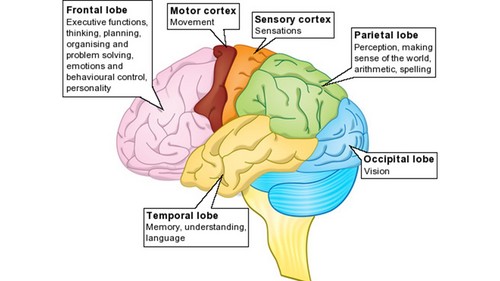
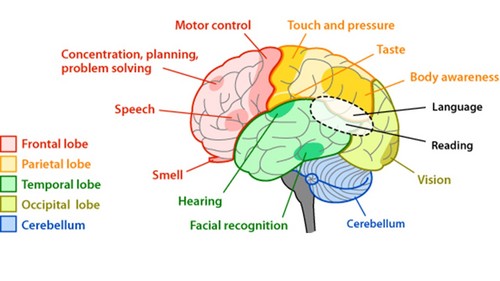

(above) The Cerebral Cortex, which is the entire outer rind of the brain, includes multiple lobes and areas. It integrates information received from our senses, controls emotions, and holds memories and thoughts. Cognitive processes make use of many parts of the brain. Nerve cells throughout the brain (neurons, see below) communicate with each other, creating thoughts, feelings, and memories. Aging Thru Art methodology uses the Arts to focus into these brain areas to stimulate neural growth to maintain and improve cognition.
Client and caregiver-therapist goals and talking points are reached connecting creative activities around client-centered themes to provide stimulating and rich individual and/or group experiences climbing a staircase of steps in therapeutic and thematic arts programming as follows (after which, the scientific basis is presented):
(The following section is largely based on the TTAP Method:)
Results (neural stimulation designed to nurture, repair and create cognition) can be either nonexistant ... or, successful and subtle, observable, intuitive and evidentiary (logged into a diary), showing and documenting enhancement of up to six cognitive abilities remaining in early-to-mid AD: communication, connection, differentiation, expression, recall (memory), and self-expression ... fundamental to feelings of well-being and experiencing an enhanced quality of life.
We approach each cognitive activity with the client's personal and meaningful themes as we engage in each Cognitive Art Staircase activity ... birthdays, accomplishments, favorite things and so on, re-visiting that theme in each distinct brain-processing cognitive theater, for example:
1. Writing down one's thoughts, expressing preferences (favorites), getting group concensus
-Linguistic- and visual communication imagery
2. Music, meditation, sharing feelings, favorites
-Intra-and-inter-personal, musical-, hearing- and visual communication imagery
3. Mood in one's mind ... drawing the imagination
-Kinesthetic, spacial-, visual- and spiritual communication imagery
4. Self-expression thru sculpture, drawing, painting, coloring
- Spatial-, visual- and kinesthetic communication imagery
5. Self-expression thru movement (and movement therapy), massage, and dance
- Kinesthetic, visual, and musical imagery communication
6. Words/poetic imagery and stories
- Linguistic, intra-and-inter-personal communication imagery
7. Food for thought
- Linguistic, kinesthetic, intra-and-inter-personal communication imagery
8. Theme event
- Intra-and-interpersonal relationships, spatial-, visual-, kinesthetic-, musical-, linguistic-, and visual modes of communication imagery
9. Photography and scrapbooking
- Linguistic, visual, intra-and-inter-personal relationships, kinesthetic- and spacial modes of communication imagery, discussion
10. Food tasting
- Tasting-sensory communication imagery
11. Psychic (intuitive) communication imagery
- Extra-sensory (intuitive nonverbal-, direct- or remote psychic reading-, healing- and communication imagery
12. Spiritual communication imagery
- Comforting visits by religious authorities corresponding to client belief system.
We also address therapeutic cognitive arts activities for the (creative) 'left side' and (logical) 'right side' of the brain, combined for encouraging peak performance.
Aging Thru Art Cognitive Art Staircase Therapy structures left-brain and right-brain functioning into therapeutic activities and protocols.
Left-brain And Right-brain Cognitive Functioning
| Right Side | Left Side |
| Creative | Logical |
| Inspiration | Arithmetic |
| Visual | Reading |
| Reactive skills | Sequential |
| Emotional | Concrete |
| Artistic | Rational |
| Playful | Goal-oriented |
Which Activities Stimulate LEFT Brain Functioning
Left Side Creative Art Therapies
| Logical/rational | Reminiscence |
| Arithmetic | Puzzles |
| Reading | Story boards |
| Sequential | Food, recipes |
| Concrete reality | Orientation, names of objects / people |
Which Activities Stimulate RIGHT Brain Functioning
Right Side Creative Art Therapies
| Inspiration | Object relations |
| Visual | Paints, color, form |
| Reactive skills | Body, movement |
| Emotional | Photographs |
| Creative/artistic | Sculpture, 3-D work |
| Playful | Being in the moment |
Peak Performance -- Using both regularly
| Left Side | Logic, math, reading, speaking |
| Right Side | Creativity, inspiration, visual |
<>The 'multi-modal' approach, attributed to Lazarus, is defined as therapy implementing individually tailored treatment programs to address behavior, affect (emotional attitude), sensation, imagery, and intra- (inner) and inter-personal (with others) relationships ... we explore personal themes meaningful to the client in all of these areas.
Science has proven every positive memory we think of, or speak about, enhances chemicals deep within our brains. These chemicals enhance and increase our cognition. Food plays a crucial role in stimulating the brain, and enhancing cognition. Different regions of the brain are stimulated when food is added to an activity. For example:
• The Orbital Frontal Cortex is stimulated through all pleasurable experiences such as food and sensory stimulation. The Occipital lobe is stimulated when autobiographical information is retrieved, like reminiscing about last year's Thanksgiving ...or, a special holiday shared with loved ones no longer with us, but who live on through us, in our hearts and minds.
• The Right Temporal Lobe responds to calming music and relaxation experiences.
• Post Parietal Lobe translates visual images into motor commands, seeing food; wanting to eat.
• The Reticular Formation controls eating behaviors, smelling of food cooking, even before "seeing" the food. This region is responsible for arousal of sensorial stimuli in the brain and is one of the last regions to be effected by the Alzheimer's disease process.
When you're sitting around the dinner table, or reminiscing with loved ones, you're stimulating your brain ... keeping cells thick and dense ... science now holds this directly correlated to decreased risk of cognitive impairments later in life.
Reminiscence Therapy is also Utilized with Dementia [30]
We find meaning in clients' lives today, encouraging them to carry personal meaning into expressive opportunities to create positive interactions with others, such as:
• Opportunities to recall the past
• Decrease stressors by increasing positive experiences
• Evaluate their lives over entire lifespan
• Think about past identities and accomplishments
(The preceding section was largely based on the TTAP Method.)
=========
(The following section is largely based on, and/or from, the TTAP Method.)
PART I
Therapeutic and Thematic Arts Programming
Improves Cognitive Functioning in Seniors
- Therapeutically stimulating activities directly enhance neuroplasticity of the brain, specifically in the hippocampus region. Our programs engage participants in a group or individual art/recreation therapy format ...ensuring a higher likelihood of full participation from each participant by providing steps that accommodate all known information processing styles.
- Most significant to the therapist/caregiver serving this ever-growing special population is that a wide variety of data sources demonstrate that recreation/arts together have a positive impact on quality of life. Factors associated with quality of life include but are not limited to: self-expression, self-worth, increased socialization, feelings of belonging to something greater, ability to self-challenge oneself, and meaningful quality time. [8-9]
Introductory research abstract [10] <> Currently, there is a need for strength-based recreation therapy approaches that promote the retention of skills and abilities of those diagnosed with Alzheimer's Disease. Two pilot studies, conducted in 2008 (and several more recent), utilized similar emerging multi-modal intervention as our programs: an approach which provides stimulation to three distinct brain systems, naturally stimulating person-centered programming, encouraging brain wellness and neural regeneration, thereby providing a viable means for enhancing cognitive functioning in those diagnosed with this neurological disorder. Research on a method efficacy similar to ours, with individuals with mild AD at Cornell University indicated practices similar to ours may be an effective intervention for slowing the progression of MCI to Alzheimer's Disease. Similarly, our method is also person-centered, culturally competent, and employs a variety of interwoven recreation/art activities.
The prevalence of MCI in the general population is reported to be as high as 25% for adults 65 years and older, [11-15] and the progression from MCI to AD per year is reported to be approximately 12% to 14%. [16-17] Multimodal interventions (a variety of mixed interventions, stimulating all regions of the brain) have proven to be extremely successful in early stages of mild cognitive impairment (MCI)/Alzheimer's Disease (AD) for decreasing symptoms. [18] Such interventions are designed to provide a wide variety of stimuli, positively affecting and increasing neuronal activity, responses, and plasticity. [19-20]
Our method is a multimodal, art/recreation process that employs art/recreation interventions within a several-step structure in order to inhibit the progression of MCI to AD. [21] Our structure maximizes interaction among participants, stimulates all aspects of brain functioning, addresses social and emotional needs, and integrates opportunities for life review. [22] Our method provides early intervention needed in order to assist older adults in retaining cognitive and psychosocial abilities. [23-26]
Methodology <> The primary aim of a study of methodology similar to ours was to examine whether engagement in structured art/recreation activity was predictive of cognitive performance ...which allowed investigation of the hypothesis that creative activity accounts for positive changes in cognitive functioning. This hypothesis predicts that dynamic, mentally stimulating activity is essential in protecting against cognitive decline associated with age and is positively correlated with cognitive performance ...variables included: age, country of origin, gender, education level, duration spent in the U.S., frequency of self-directed art making, living arrangements, and attendance to art therapy sessions. Only attendance to art therapy sessions was found to have a significant correlation to cognitive evaluation test scores.
The second set of pilot studies were conducted at St. Thomas Aquinas College at Bergen Regional Medical Center, the Alzheimer's locked Unit. These two studies investigated the subjective responses to a therapy similar to ours vs. daily recreation therapy sessions. The study was to examine four questions:
- Did individuals feel the method increased their overall feelings of quality of life?
- Did the sessions positively affect their personal needs?
- Did the sessions enhance verbalization?
- Does the method naturally increase opportunities for cognitive stimulation in programming?
Each method session was followed with post-session questions from the Farrington Leisure Evaluation Scale (adapted for this research study). This format allowed investigation of the hypothesis that those individuals with moderate AD could evaluate and give feedback regarding their likes and dislikes of the multimodal art/recreation activity. This hypothesis predicted that dynamic, mentally stimulating multimodal approach is essential at any stage of the disease process and can have an overall affect on psychosocial well-being, increased verbalization and enhance cognitive stimulation.
For seven weeks testers met with the same six individuals, and designed a different multimodal method session each week for 1.5 hours. Following each session testers utilized a modified version of Farmington's Leisure Evaluation Scale (using 1-5 Lickert Scale) and open-ended questions, to attain responses from the participants regarding "their voice" in the overall evaluation of each session.
- Findings demonstrated high levels of self-satisfaction throughout all sessions, rating 4.85 out of 5
- Shown to have a direct effect on responders' feelings of their needs being met, rating 4.9
- Method was shown to increase verbal interactions both by the tester's subjective observations and by open-ended questions residents answered
- Method was found to increase multiple opportunities for stimulating cognition through tester observations, and residents' open-ended responses.
The Aging Thru Art methodology, similar almost exactly to the Madori model tested, is an innovative and viable multi-modal recreation/art therapy method for slowing the progression of AD. The Madori model method in this abstract was incorporated into various research projects in New Zealand, Finland, Australia and the United States. The method was developed out of current growing neuroscience research which demonstrates that life experiences and activities that challenge the mind in a safe and socially validating person-centered way result in positive and continuous changes in the human brain, even in the individual with Mild AD, Moderate AD or advanced stages.


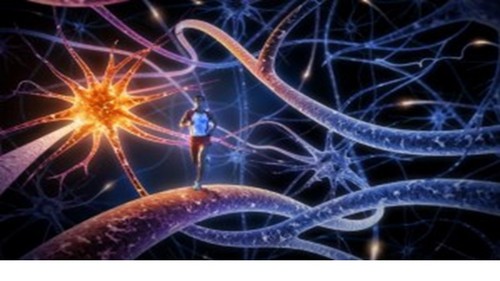
PART II
Abstract: The establishment of new therapeutic art, movement and recreational therapeutics to improve senior cognition and cognition in special populations is described.
- New Protocols and Lesson Plans to Increase Self Expression in Alzheimer's Disease Clients [27]
- Arts, and the creative arts experience, directly effect and affect brain regions and function
- Creative stimulation and the Hippocampus ... located in the Limbic system

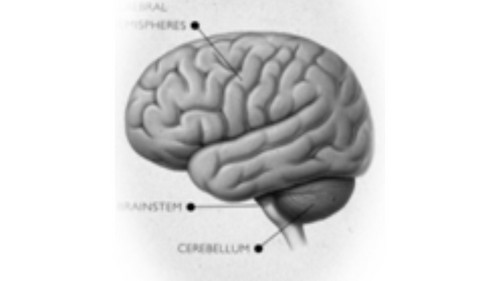
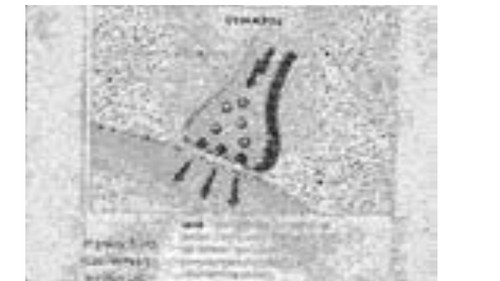

(above) The Hippocampus is located in the Limbic system; (ul) Hippocampus; (ur) brain hemispheres, brainstem and cerebellum; (ll) representation of a synapse with electrocehmical arc transferring info from one nerve cell to another; (lr) nerve cells.
Definition -- Neuroplasticity: ability of our brain to grow or shrink in size and mass.
Environmental stimulation, including sight, smell, taste, touch and education triggers our cells in our Hippocampus region to multiply, and become larger, denser and healthier. [28] Studies on cognitive methods (similar to Aging Thru Art Cognitive Art Intevention Therapy) w/significant outcomes, include: Hebrew Home for the Aged. [29]
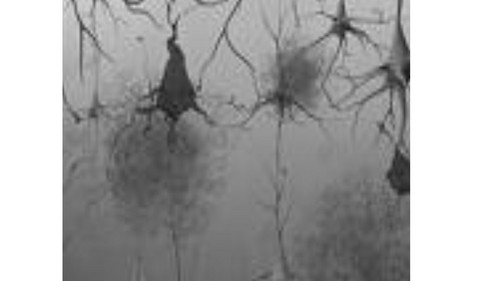
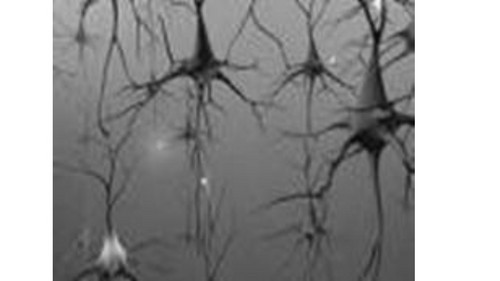
(above) Inside a living brain: (l) Dendrites w/cellular degeneration. (r) Healthy dendrites with enriched, dense connections.
Hippocampus wellness and your cognitive reserve
Some scientists envision the beginning and progression of Alzheimer's Diseases as atrophying nerve cells slowing breaking down ... eliminating the electro-chemical relationships that uphold healthy cognitive functioning, (see illustrations, above; and explanation, below).
Early stage
- Plaques and Tangles develop in the Enthornal cortex
- The Enthornal cortex is essential for making new memories and retrieving old ones
-
Middle stage
- Over time abnormal cells move higher up through the Hippocampus
- The Hippocampus is responsible for complex memories, events, and life experiences
-
Last stage
- Plaques/tangles move up and across the brain to the Neocortex
- Breakdown of the neocortex eventually prevents orchestration of behavior, eating, and causes loss of all ADL's (activities of daily living).
-
Part III

Science has proven every positive memory we think of, or speak about, enhances chemicals deep within our brains. These chemicals enhance and increase our cognition. Food plays a crucial role in stimulating the brain, and enhancing cognition. Different regions of the brain are stimulated when food is added to an activity. For example:
- The Orbital Frontal Cortex is stimulated through all pleasurable experiences such as food and sensory stimulation. The Occipital lobe is stimulated when autobiographical information is retrieved, like reminiscing about last year's Thanksgiving ...or, a special holiday shared with loved ones no longer with us, but who live on through us, in our hearts and minds.
- The Right Temporal Lobe responds to calming music and relaxation experiences.
- Post Parietal Lobe translates visual images into motor commands, seeing food; wanting to eat.
- The Reticular Formation controls eating behaviors, smelling of food cooking, even before "seeing" the food. This region is responsible for arousal of sensorial stimuli in the brain and is one of the last regions to be effected by the Alzheimer's disease process.
When you're sitting around the dinner table, or reminiscing with loved ones, you're stimulating your brain ...keeping cells thick and dense ...science now holds this directly correlated to decreased risk of cognitive impairments later in life.
Reminiscence Therapy is also Utilized with Dementia [30]
We find meaning in clients' lives today, encouraging them to carry personal meaning into expressive opportunities to create positive interactions with others, such as:
- Opportunities to recall the past
- Decrease stressors by increasing positive experiences
- Evaluate their lives over entire lifespan
- Think about past identities and accomplishment
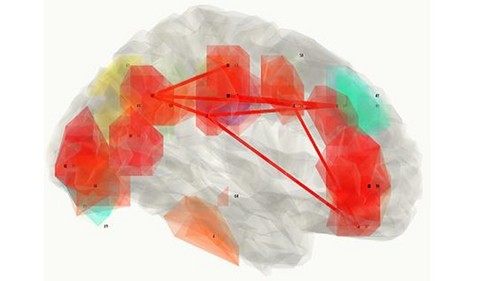
(above) A brain map of neural activation according to MOST-EEG analysis, showing the right side of the brain.
(Note: The TTAP Method, (in practice, similar to Aging Thru Art methodology) also structures right-brain and left-brain functioning into protocols. The following presentation is also based on TTAP material.)
Aging Thru Art Cognitive Art Staircase Therapy structures left-brain and right-brain functioning into therapeutic activities and protocols.
Left-brain And Right-brain Cognitive Functioning
| Left Side | Right Side |
| Creative | Logical |
| Inspiration | Arithmetic |
| Visual | Reading |
| Reactive skills | Sequential |
| Emotional | Concrete |
| Artistic | Rational |
| Playful | Goal-oriented |
Which Activities Stimulate LEFT Brain Functioning
Left Side Creative Art Therapies
| Logical/rational | Reminiscence |
| Arithmetic | Puzzles |
| Reading | Story boards |
| Sequential | Food, recipes |
| Concrete reality | Orientation, names of objects / people |
Which Activities Stimulate RIGHT Brain Functioning
Right Side Creative Art Therapies
| Inspiration | Object relations |
| Visual | Paints, color, form |
| Reactive skills | Body, movement |
| Emotional | Photographs |
| Creative/artistic | Sculpture, 3-D work |
| Playful | Being in the moment |
Peak Performance -- Using both regularly
| Left Side | Logic, math, reading, speaking |
| Right Side | Creativity, inspiration, visual |
<>The 'multi-modal' approach, attributed to Lazarus, is defined as therapy implementing individually tailored treatment programs to address behavior, affect (emotional attitude), sensation, imagery, and intra- (inner) and inter-personal (with others) relationships ... we explore personal themes meaningful to the client in all of these areas.
Science has proven every positive memory we think of, or speak about, enhances chemicals deep within our brains. These chemicals enhance and increase our cognition.

The Hippocampus is located in the Limbic system, which is called the seat of our emotions. Art stimulates emotions, thus enriching the mind. Multi-modal, structured therapeutic intervention stimulates different areas of the brain.
Translating Research into Practice: Emotions, Learning and Creativity
- Activating recall and memories thru object recognition and manipulation
- Shared experiences multiplying opportunities for reminiscing w/others
- Emphasizing positive emotional memories ...to enhance brain activity and change brain chemistry ...affecting cognitive ability
- Activating personal memories through events of themes across one's lifespan
- Increasing and continual emotional input and output to enhance social interactions
Part 4
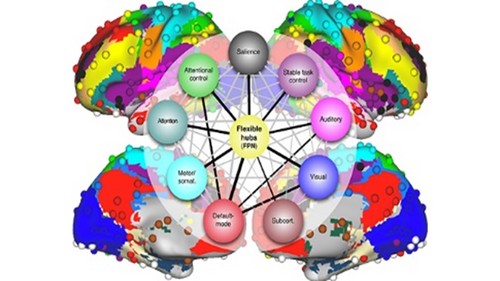
Background diagram shows 264 brain regions in the human brain color coded by network affiliation. Center sphere shows networks labeled with their potential functions; lines indicate how much inter-network communication changes across dozens of tasks, with especially dramatic changes in bold.
Research from Washington University in St. Louis offers compelling evidence that a well-connected core brain network based in the lateral prefrontal cortex and the posterior parietal cortex, (parts of the brain most changed evolutionarily since our common ancestor with chimpanzees), contains ‘flexible hubs' that coordinate the brain's responses to novel cognitive challenges.
Acting as a central switching station for cognitive processing, this fronto-parietal brain network funnels incoming task instructions to those brain regions most adept at handling the cognitive task at hand, coordinating the transfer of information among processing brain regions to facilitate the rapid learning of new skills, the study finds.
"Flexible hubs are brain regions that coordinate activity throughout the brain to implement tasks - like a large Internet traffic router," suggests Michael Cole, PhD., a postdoctoral research associate in psychology at Washington University and lead author of the study published July 29 in the journal Nature Neuroscience.
"Like an Internet router, flexible hubs shift which networks they communicate with based on instructions for the task at hand and can do so even for tasks never performed before," he adds.
Decades of brain research built a consensus understanding of the brain as an interconnected network of as many as 300 distinct regional brain structures, each with its own specialized cognitive functions.
Binding these processing areas together is a web of about a dozen major networks, each serving as the brain's means for implementing distinct task functions - i.e. auditory, visual, tactile, memory, attention and motor processes.
It was known fronto-parietal brain regions form a network that is most active during novel or non-routine tasks, but it was unknown how this network's activity might help implement tasks.

Diagram illustrates how skills practiced in the visual-motor network can be transferred to support the rapid learning of similar skills in the auditory-motor network.[31]
This study proposes and provides strong evidence for a "flexible hub" theory of brain function in which the fronto-parietal network is composed of flexible hubs that help to organize and coordinate processing among the other specialized networks.
This study provides strong support for the flexible hub theory in two key areas. First, the study yielded new evidence that when novel tasks are processed flexible hubs within the fronto-parietal network make multiple, rapidly shifting connections with specialized processing areas scattered throughout the brain.
Second, by closely analyzing activity patterns as the flexible hubs connect with various brain regions during the processing of specific tasks, researchers determined that these connection patterns include telltale characteristics that can be decoded and used to identify which specific task is being implemented by the brain.
These unique patterns of connection-like the distinct strand patterns of a spider web-appear to be the brain's mechanism for the coding and transfer of specific processing skills, the study suggests.
By tracking where and when these unique connection patterns occur in the brain, researchers were able to document flexible hubs' role in shifting previously learned and practiced problem-solving skills and protocols from one area of the brain to another. Known as compositional coding, the process allows skills learned in one context to be re-packaged and re-used in other applications, thus shortening the learning curve for novel tasks.
What's more, by tracking the testing performance of individual study participants, the team demonstrated that the transfer of these processing skills helped participants speed their mastery of novel tasks, essentially using previously practiced processing tricks to get up to speed much more quickly for similar challenges in a novel setting.
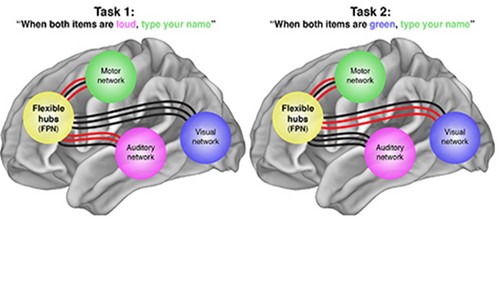
(above) The brain's FPN region is shown to play a central role in routing the processing of cognitive tasks among a range of specialized cognitive processing networks, such as the linkages shown here among the visual, auditory and motor control networks. The brain's flexible hub helps humans adapt; switching stations route processing of novel cognitive tasks. [32]
[1] http://art-in-portland.9k.com/rich_text_3.html
[2] http://art-in-portland.9k.com/
[3] http://www.levinemadoriphd.com/content/site/bio.php
[4] http://www.levinemadoriphd.com/index.php
[5] http://art-in-portland.9k.com/
[6] http://www.levinemadoriphd.com/content/news/the-ttap-method--an-innovative.php
[7] Lyons, W. (1999) ‘The philosophy of cognition and emotion', in T. Daleish and M.J. Power (eds), Handbook of Cognition and Emotion. Chichester: Wiley
[8]Clare,L. (2002) We'll fight as long as we can: coping with AD: Aging & Mental Health, 6, 139-148.
[9] Lawton M.P. (1994). Quality of life in Alzheimer's disease. Alzheimer's Disease and Associated disorders, 8 (suppl.3) 138-150.
[10] This abstract was on the website of The TTAP Method -- an innovative multimodal approach for Alzheimer's Disease, designed by Linda Levine Madori, PhD. I (Alan Kernoff) discovered the website a few days ago and it very accurately reflects our methodology to improve senior cognitive functioning. I have slightly re-edited it, as our methodology is primarily the same, to suggest the similarities, and exemplify our methodology.
[11] Gurland, B., Wilder, D., Lantigua, R., Stern, Y. & Chen, J. (1999). Rates of dementia in three ethno-racial groups. International Journal of Geriatric Psychiatry, 14(6), 481- 493.
[12] National Institute on Aging, Progress Report on Alzheimer's disease. (2005). NIH Publication No. 05-5724. Bethesda, MD: Author. Retrieved from http://www.alzheimers.org/pr04-05/index.asp
[13] Kumara, R., Dearb, K., Christensenb, H., Ilschnerb, S., Meslinb, S. & Sachdevc, P. (2005). Prevalence of Mild Cognitive Impairment in 60- to 64-Year-Old Community-Dwelling Individuals: The Personality and Total Health through Life 60+ Study. Dementia and Geriatric Cognitive Disorders, 19, 67-74.
[14] Manly, J., Tang, M., Schupf, N. & Stern., Y. (2005). Implementing diagnostic criteria and estimating frequency of mild cognitive impairment in an urban community. Archives of Neurology, 62, 1739-1746.
[15] Pressley, J., Trott, C. & Tang, M. (2003). Dementia in community-dwelling elderly patients: a comparison of survey data, Medicare claims, cognitive screening, reported symptoms, and activity limitations. Journal of Clinical Epidemiology, 56, 896-905.
[16] Davie, J., Azuma, T., Goldinger, S., Connor, D., Sabbagh, M. and Silverberg, N. (2004). Sensitivity to expectancy violations in health aging and mild cognitive impairment. Neuropsychology, 18(2), 269-275.
[17] Fernandez-Ballesteros, R., Zamarron, M.D., Tarraga, L., Moya, R. & Iniguez, J. (2003). Cognitive plasticity in healthy, mild cognitive impairment (MCI) subjects and Alzheimer's disease patients: A research project in Spain. European Psychologist, 8(3), 148-159
[18] Rentz, C. (2002). Memories in the Making©: Outcome-based evaluation of an art-based program for individuals with dementing illnesses. American Journal of Alzheimer's Disease and other Dementias, 17(3), 175-181.
[19] Ibid.
[20] Burgener, S., Gilbert, R. & Mathy, R. (2007). The effects of a multi-modal intervention on cognitive, physical, and affective outcomes of persons with early stage dementia. Journal of Alzheimer's Disease and Related Disorders, 12, 143-156.
[21] Madori, L. (2007). Therapeutic Thematic Arts Programming for Older Adults. Baltimore, MD: Health Professions Press.
[22] Ibid.
[23] Rentz, C. (2002). Memories in the Making©: Outcome-based evaluation of an art-based program for individuals with dementing illnesses. American Journal of Alzheimer's Disease and other Dementias, 17(3), 175-181.
[24] Hass-Cohen, N. & Carr, R. (Eds.). (2008). Art therapy and clinical neuroscience. London: Jessica Kingsley.
[25] Moniz-Cook, E., Agar, S., Gibson,G., Win, T. & Wing, M. (1998). A preliminary study of the effects of early intervention with people with dementia and their families in a memory clinic. Aging & Mental Health, 2(3), 199-211.
[26] Kluger, A., Ferris, S., Golomb, J., Mittelman, M. & Reisberg, B. (1999). Neuropsychological prediction of decline to dementia in non-demented elderly. Journal of Geriatric Psychiatry and Neurology, 12, 168-179.
[27] This section is based on a presentation at the 25th Annual Alzheimer's Regional Conference, April, 2010, by Linda Levine Madori, PhD, ATR-BC, LCAT, (two-time) Fulbright Scholar, entitled: TTAP Method, New Directions in Activities for Self Expression
[28] Diamond, 2001; Snowdon, 2002; Perry 2008
[29] Levine Madori, 2005, 2009
[30] Woods, B., Spector, A., Jones, C., Orrell, M., Davis, S (2006). Reminiscence therapy for dementia: A Review. The Cochrane Collaboration, Issue 3. Retrieved: 7/15/2009.http://www.thecochrane.Tabourne, C., Jung, L., McClear, E.(2008) Life Review Programming (LRP) with Korean individuals diagnosed with Alzheimer's disease. American Journal of Recreation Therapy. (4):25-35.
[31] Credit: Michael Cole / WUSTL
[32] Ibid

